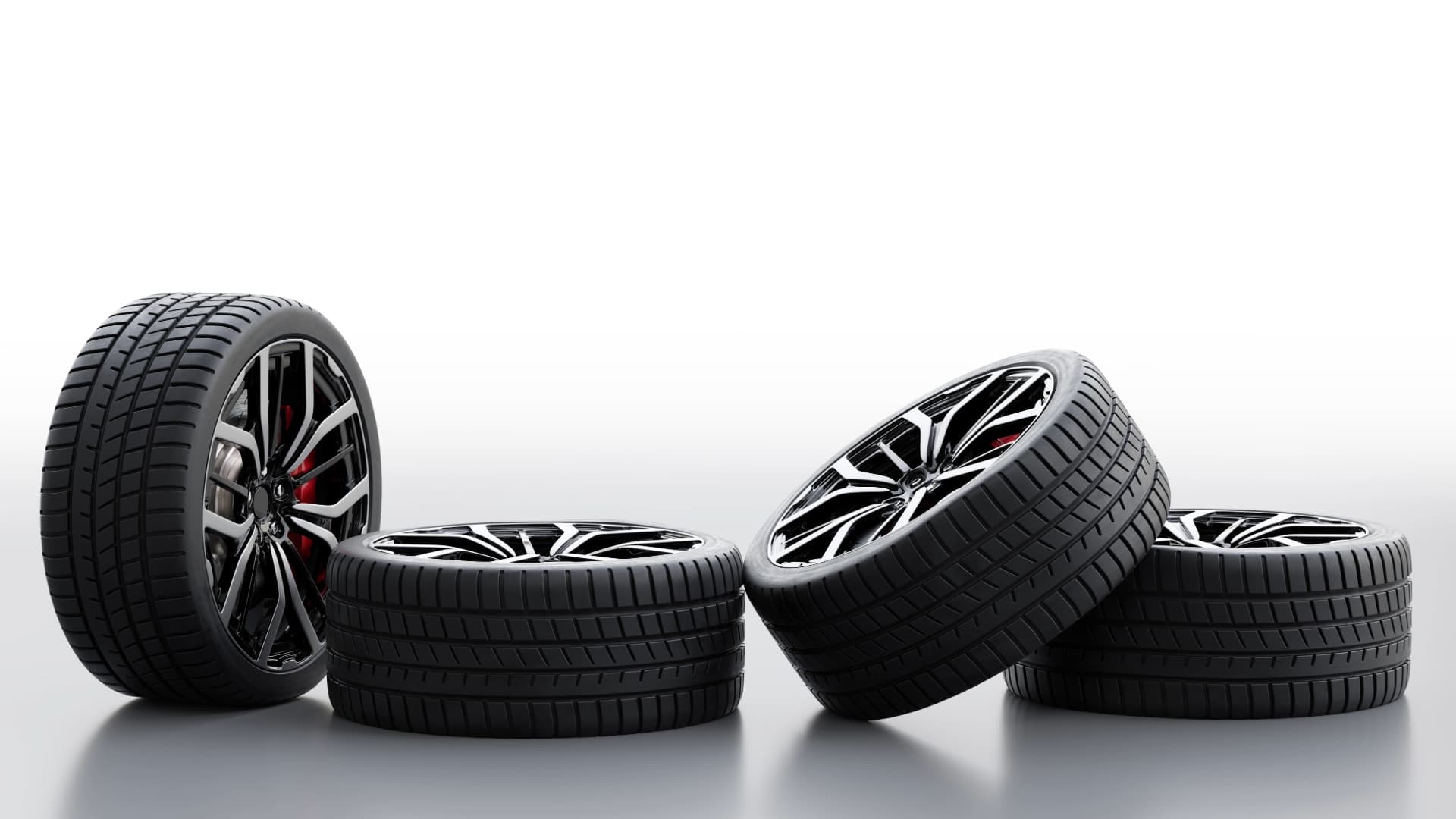Tire Maintenance & Safety
Best price guarantee
Tire replacement coverage
24/7 roadside assistance
Easy returns

All-wheel drive (AWD) has become an increasingly popular feature in modern vehicles. It offers improved traction and handling, particularly in challenging weather conditions like rain, snow, and ice.
While AWD provides numerous benefits, it also comes with specific maintenance requirements, especially when it comes to tire replacement. Understanding the unique needs of your AWD vehicle can help you make informed decisions and avoid costly repairs down the road.
In this article, we'll explore the ins and outs of AWD tire replacement, including why it's different from replacing tires on a two-wheel drive vehicle and what you need to know to keep your AWD system functioning optimally. Let's dive in and discover the best practices for maintaining your AWD vehicle's tires.
What is All Wheel Drive (AWD)?
All-wheel drive is a drivetrain system that distributes power to all four wheels of a vehicle simultaneously. Unlike front-wheel drive (FWD) or rear-wheel drive (RWD) systems that send power to only two wheels, AWD provides power to each wheel, allowing for better grip and stability.
There are several types of AWD systems, each with its own unique characteristics:
- Full-time AWD: This system constantly sends power to all four wheels, regardless of driving conditions. It's commonly found in luxury vehicles and SUVs.
- Part-time AWD: Also known as on-demand AWD, this system primarily operates in two-wheel drive mode but can send power to all four wheels when needed, such as when slippage is detected. It's often found in trucks and some SUVs.
- Automatic AWD: This system automatically switches between two-wheel and all-wheel drive based on driving conditions, without requiring driver input. It's popular in many modern CUVs and sedans.
The primary benefit of AWD is improved traction, which is especially useful in slippery conditions. By distributing power evenly to all four wheels, AWD helps maintain better control and stability, reducing the risk of slipping or sliding. This can be particularly advantageous when driving on wet, snowy, or icy roads.
Additionally, AWD can enhance a vehicle's handling and performance in dry conditions. The even distribution of power can help improve cornering and acceleration, providing a more engaging and responsive driving experience.
However, it's important to note that while AWD can improve traction and handling, it doesn't necessarily make a vehicle invincible in all driving conditions. Proper tire maintenance, safe driving habits, and adjusting to the conditions at hand are still essential for maintaining control of your AWD vehicle.
Why is Tire Replacement Different for AWD Vehicles?

AWD vehicles need a precise balance among all four tires to function optimally. This balance ensures the vehicle maintains traction and stability, key factors that differentiate AWD from other drivetrains. When the tires have uniform size and tread pattern, the AWD system can operate smoothly, providing the intended benefits of enhanced handling and control.
Variations among tires present challenges for AWD systems. When tires differ in size or tread depth, they can disrupt the harmonious operation of the drivetrain. This disruption occurs because the system must adjust for uneven tire rotation, which can lead to increased wear on components like the differential and transfer case. Over time, these discrepancies can result in costly repairs and diminished vehicle performance.
Even slight differences in tire size can affect an AWD vehicle's functionality. If one tire is marginally larger or smaller, it may cause the AWD system to engage unnecessarily, interpreting it as a slip. This can lead to reduced handling efficiency and lower fuel economy, as the vehicle works to maintain equilibrium. Keeping consistent tires on all four wheels is essential to prevent these issues and ensure the longevity of the AWD system.
Can You Replace Just One or Two Tires on an AWD Vehicle?
When it comes to AWD vehicles, replacing all four tires simultaneously often remains the preferred method. This strategy helps ensure that each tire shares the same tread wear characteristics, which is critical for preserving the seamless operation of the AWD system. Yet, there are circumstances where replacing just one or two tires might be feasible, particularly when the remaining tires still have adequate tread.
If only a single tire becomes damaged, replacing that specific tire can be an option, provided certain criteria are met. The new tire should exactly match the existing ones in terms of brand, model, and size. To achieve the necessary tread depth alignment, a tire shaving service can be utilized, bringing the new tire's tread depth in line with the others. This service maintains the tire's harmony, essential for smooth AWD performance.
Before deciding to replace fewer than four tires, it's important to assess the tread depth of the existing tires. If the difference in tread depths is minimal, the AWD system can usually handle the variation without negative consequences. A consultation with an experienced tire specialist can offer guidance on the best path forward, ensuring the vehicle remains safe and operates efficiently.
What Are the Risks of Mismatched Tires on AWD Vehicles?
Mismatched tires can lead to inefficiencies in how an AWD vehicle distributes power. When tires vary in size or tread, the drivetrain may face imbalances in rotational speeds, causing components like the transfer case to experience unnecessary stress. This misalignment in power distribution can increase wear on these crucial parts, potentially resulting in costly repairs over time.
Handling becomes unpredictable with mismatched tires. Differences in tread depth can alter the vehicle's trajectory, making it more prone to veering off course. This inconsistency undermines the vehicle's ability to maintain smooth and precise control, especially during maneuvers that require quick response. Ensuring that all four tires have similar tread depth is vital to maintaining safe handling dynamics.
In extreme situations, the discrepancy in tire specifications can lead to severe mechanical issues within the AWD system. The differential, tasked with managing power flow, may struggle to operate efficiently when confronted with uneven tire rotation. Over time, this inefficiency can cause significant damage, necessitating expensive replacements. To preserve the integrity of the drivetrain, it is essential to match tires in both size and tread depth, ensuring the AWD system functions seamlessly.
How to Maintain Tires on an AWD Vehicle
For AWD vehicles, maintaining tire health requires diligent attention. Following the manufacturer's guidelines for rotating tires is crucial. This practice helps ensure even tread wear across all four tires, which is vital for maintaining the vehicle's stability and performance. Regular rotations also help extend the life of the tires, preventing the uneven wear that can disrupt the vehicle's balance.
Ensuring that all tires are properly inflated is essential for optimal performance. Proper inflation levels support the vehicle's handling and fuel efficiency by minimizing rolling resistance. Checking tire pressure consistently with an accurate gauge helps maintain this balance and prevents the additional stress that can result from underinflation, which may lead to increased tire wear.
Regular tire inspections are key to identifying potential issues before they become major problems. Look for signs of uneven wear, which might suggest alignment concerns, and check for any visible damage like cuts or embedded objects. Addressing these issues early can prevent further damage and keep the vehicle running safely. For additional peace of mind, consider options like tire replacement coverage to help manage unexpected tire expenses.
When to Replace Tires on an AWD Vehicle
For AWD vehicles, monitoring tread depth is vital to maintaining effective traction and control. As tires wear down, their ability to grip the road diminishes, which can compromise handling and increase stopping distances. Replacing tires when tread depth reaches 4/32" ensures that they retain the necessary road contact, enhancing safety and performance.
In addition to tread depth, be vigilant for signs that your tires may need replacement. Tires that exhibit irregular wear patterns could indicate potential alignment or suspension issues, which should be addressed promptly to prevent further damage. Watch for other warning signs like bulges, blisters, or cracks in the sidewalls, as these can signal structural weaknesses that may lead to tire failure. Regular checks help identify these problems early.
The age of your tires also impacts their reliability. Over the years, the rubber compounds can break down, even if the tread appears sufficient. Tires older than six years should be replaced to avoid unexpected failures. This proactive approach ensures that your tires deliver dependable performance, allowing the AWD system to operate effectively and maintain vehicle safety.
Choosing the Right Replacement Tires for Your AWD Vehicle

Selecting optimal replacement tires for an AWD vehicle requires attention to the specific requirements of your vehicle. Focus on factors such as the tire's compatibility with your vehicle's braking, handling, and traction characteristics. Ensuring these attributes align with your vehicle's design helps maintain the intended balance and performance of the AWD system.
Consider the conditions you regularly encounter when choosing new tires. Different types of tires cater to distinct driving needs:
- All-season tires: Suitable for drivers in regions with moderate weather, providing year-round usability without the need to switch tires seasonally.
- Winter tires: Essential for areas experiencing severe winter weather, these tires offer better grip on snow-covered and icy roads.
- Performance tires: Perfect for those who prioritize agile handling and enhanced cornering ability, often favored by enthusiasts for spirited driving.
Seek advice from knowledgeable tire experts who understand the intricacies of AWD systems. They can offer tailored recommendations based on your vehicle's specifications and your driving environment. Additionally, utilizing online resources that consider your vehicle's make and model can further guide you in selecting tires that enhance both safety and driving enjoyment.
Navigating the world of AWD tire replacement can seem daunting, but armed with the right knowledge, you can make informed decisions that keep your vehicle running smoothly. Remember, maintaining the balance and health of your tires is essential for ensuring the longevity and performance of your AWD system. When you're ready to shop for tires online and find the best deals, we're here to help you every step of the way.
Yes, all four tires need to be replaced at the same time as AWD vehicles use transfer cases and differentials to distribute power from the rear and to the sides. Less tread on one tire will result in an imbalance and the AWD system rotate one tire slower than the others to match the rotation speed of the tire with greater tread depth. Although this can be done at times, drivetrains should not be subjected to this on a regular basis, or else they may cause damages.
The maximum tread life variance that’s allowed from tire-to-tire on an all-wheel drive vehicle should be no more than 3/32nds of an inch. Any greater variance than that can damage the cases and axles on an all-wheel drive vehicle.
Ready to find the perfect tires?
Search By